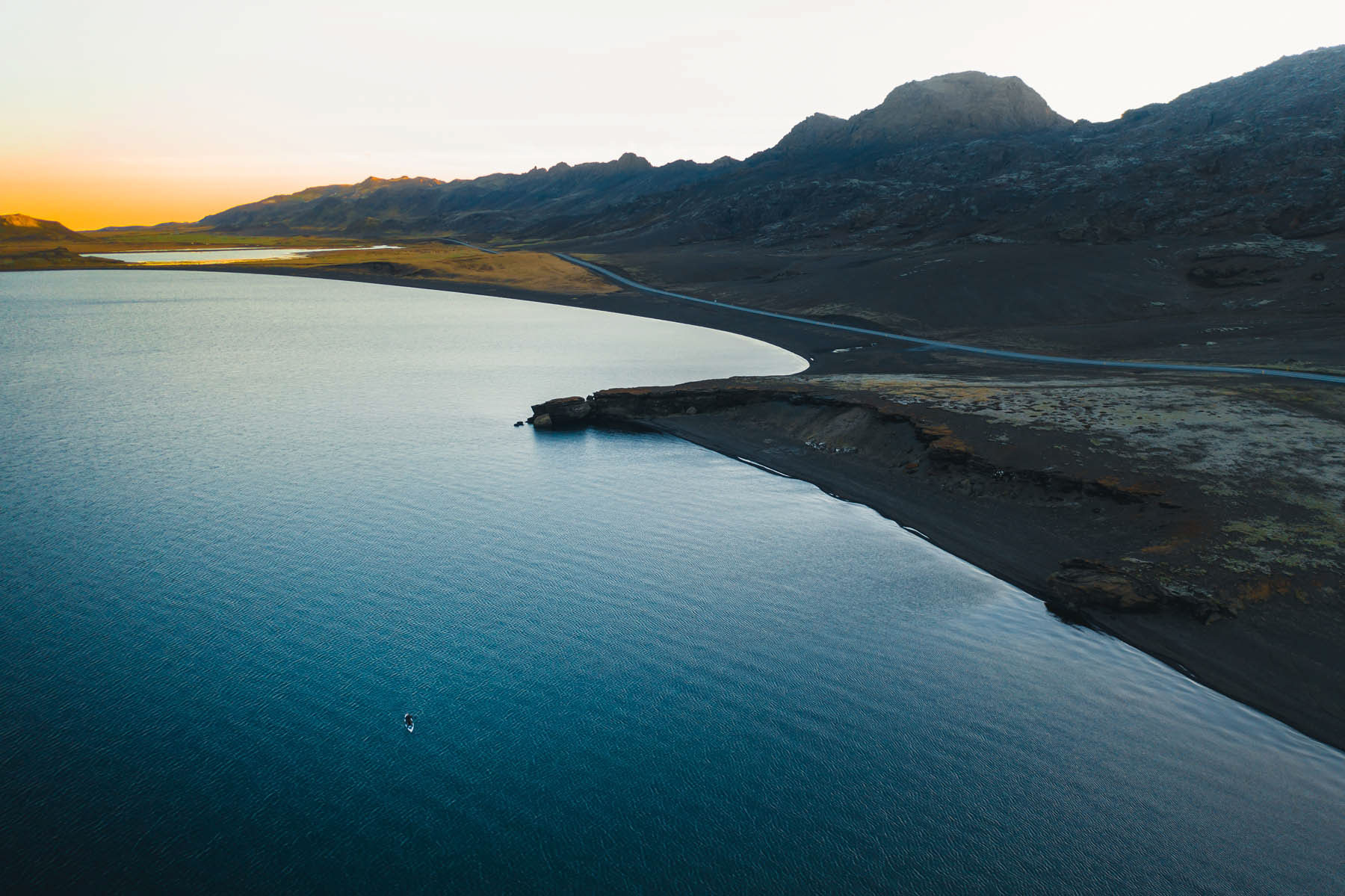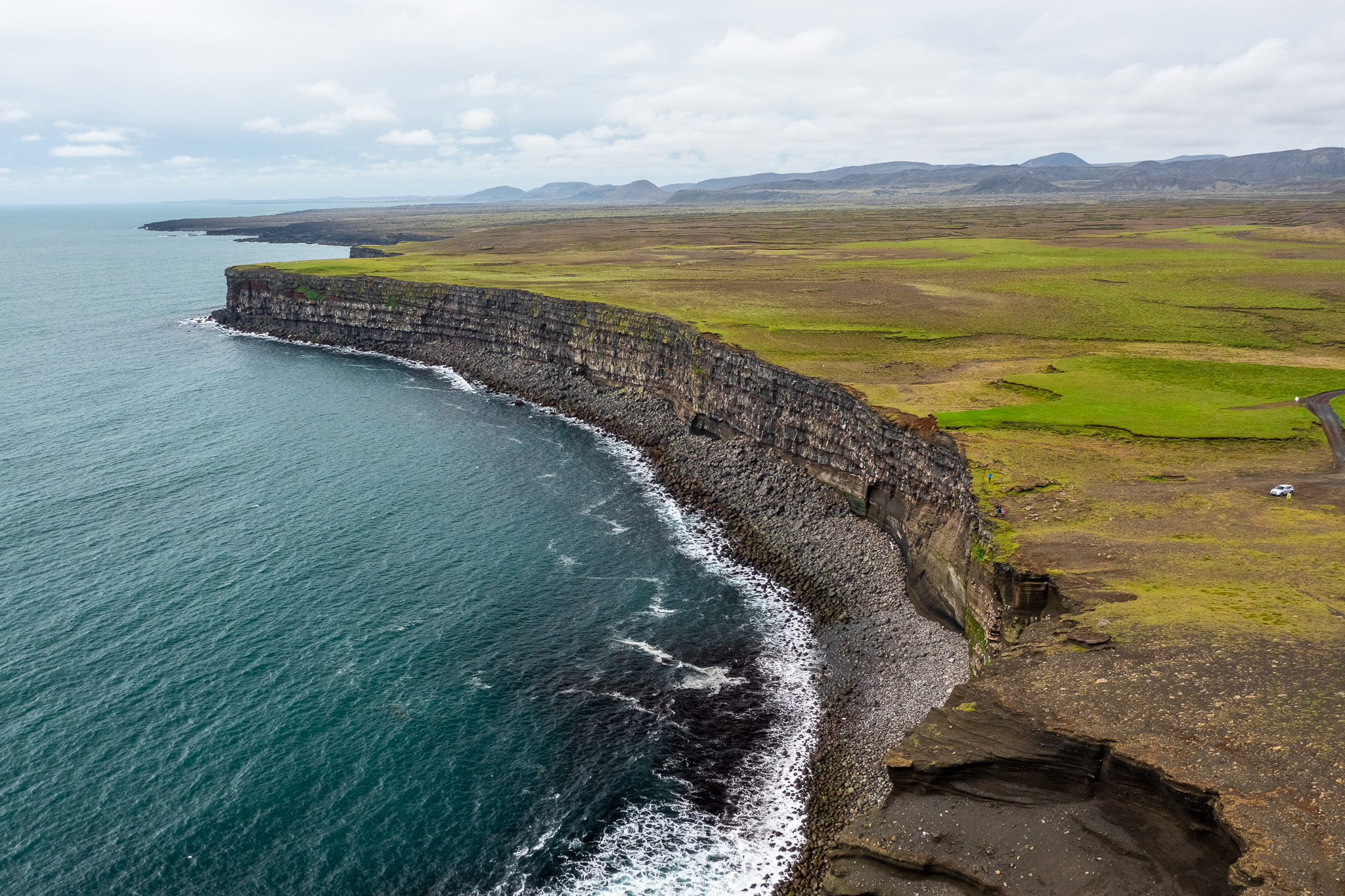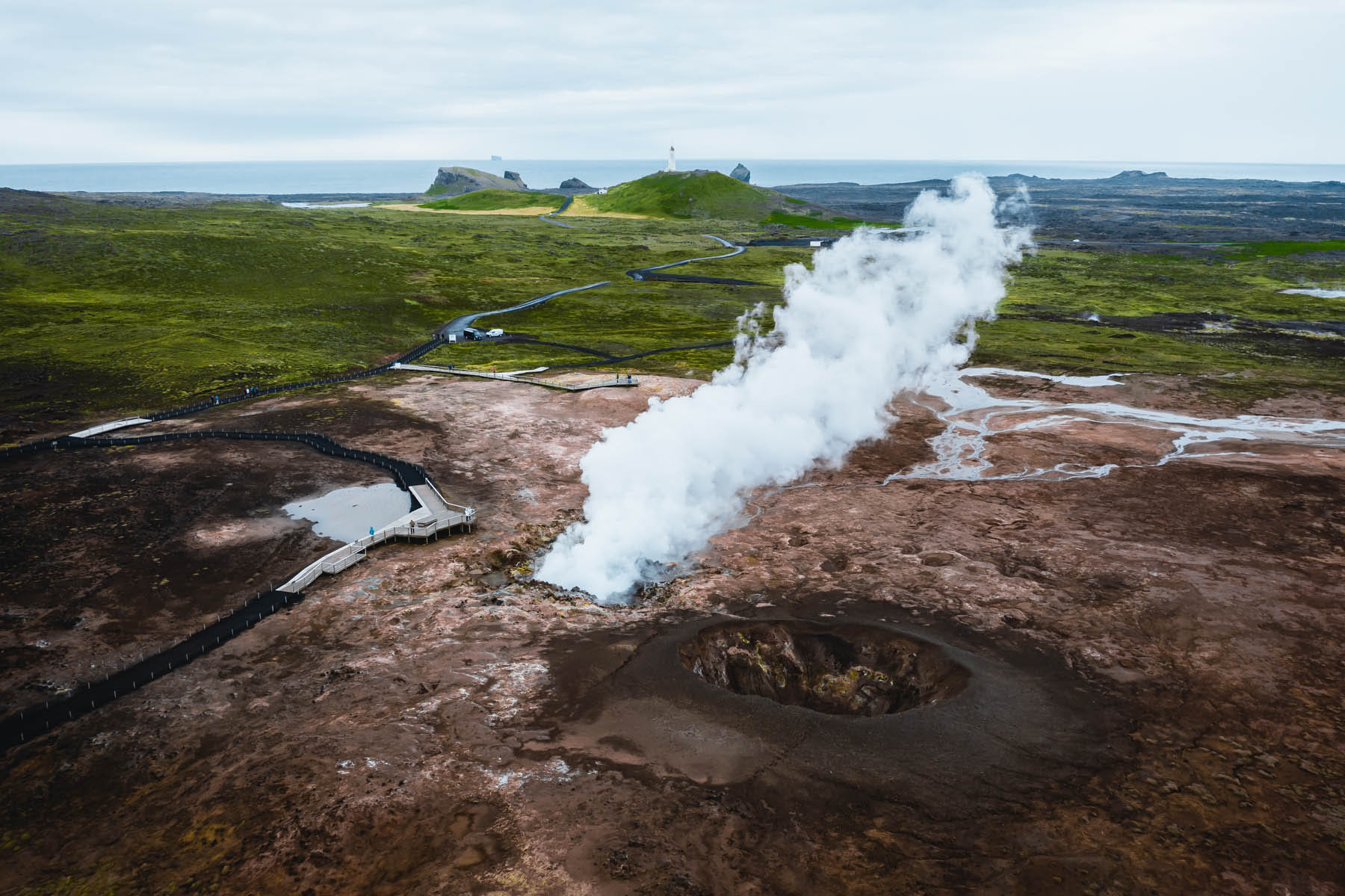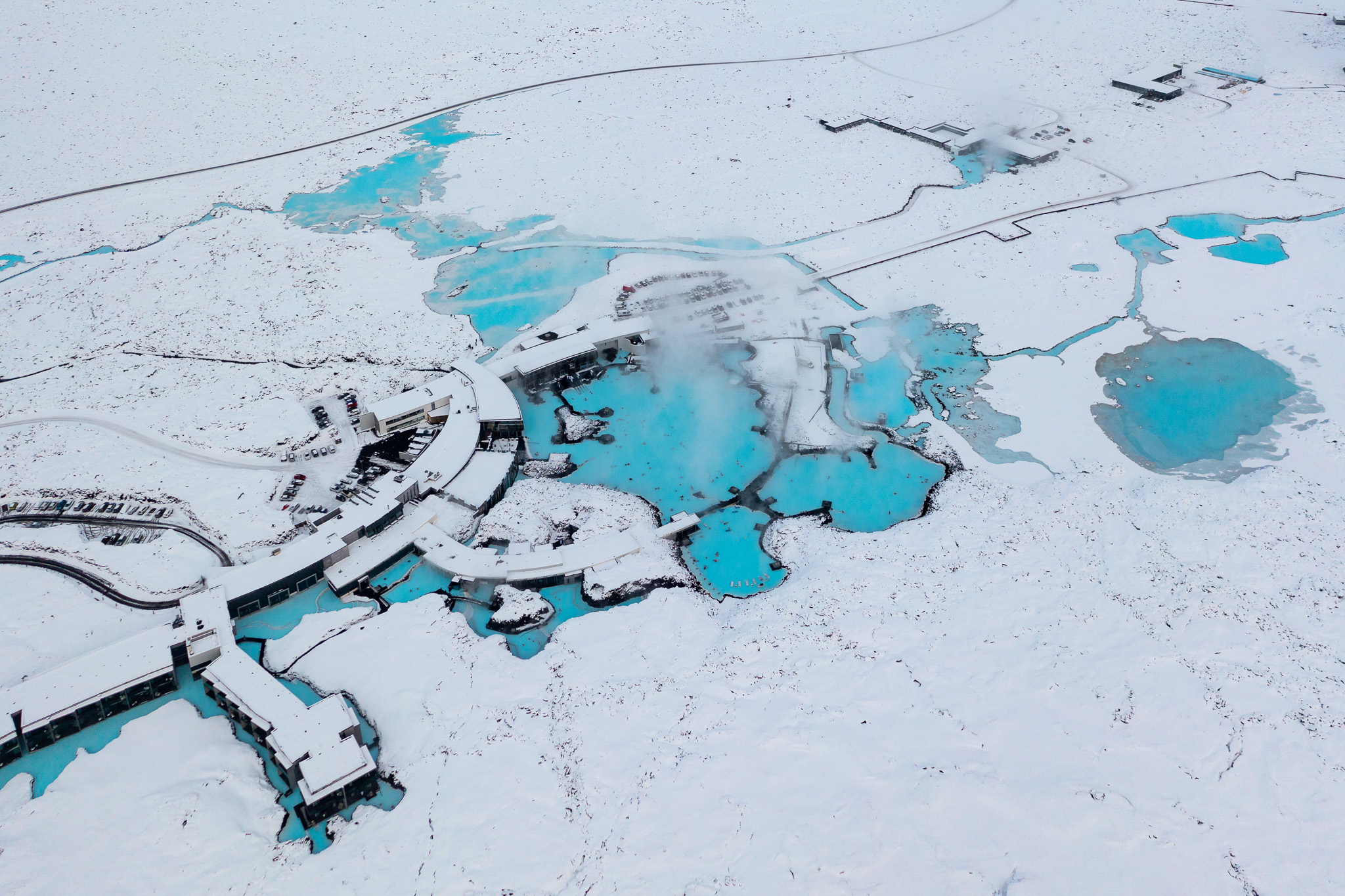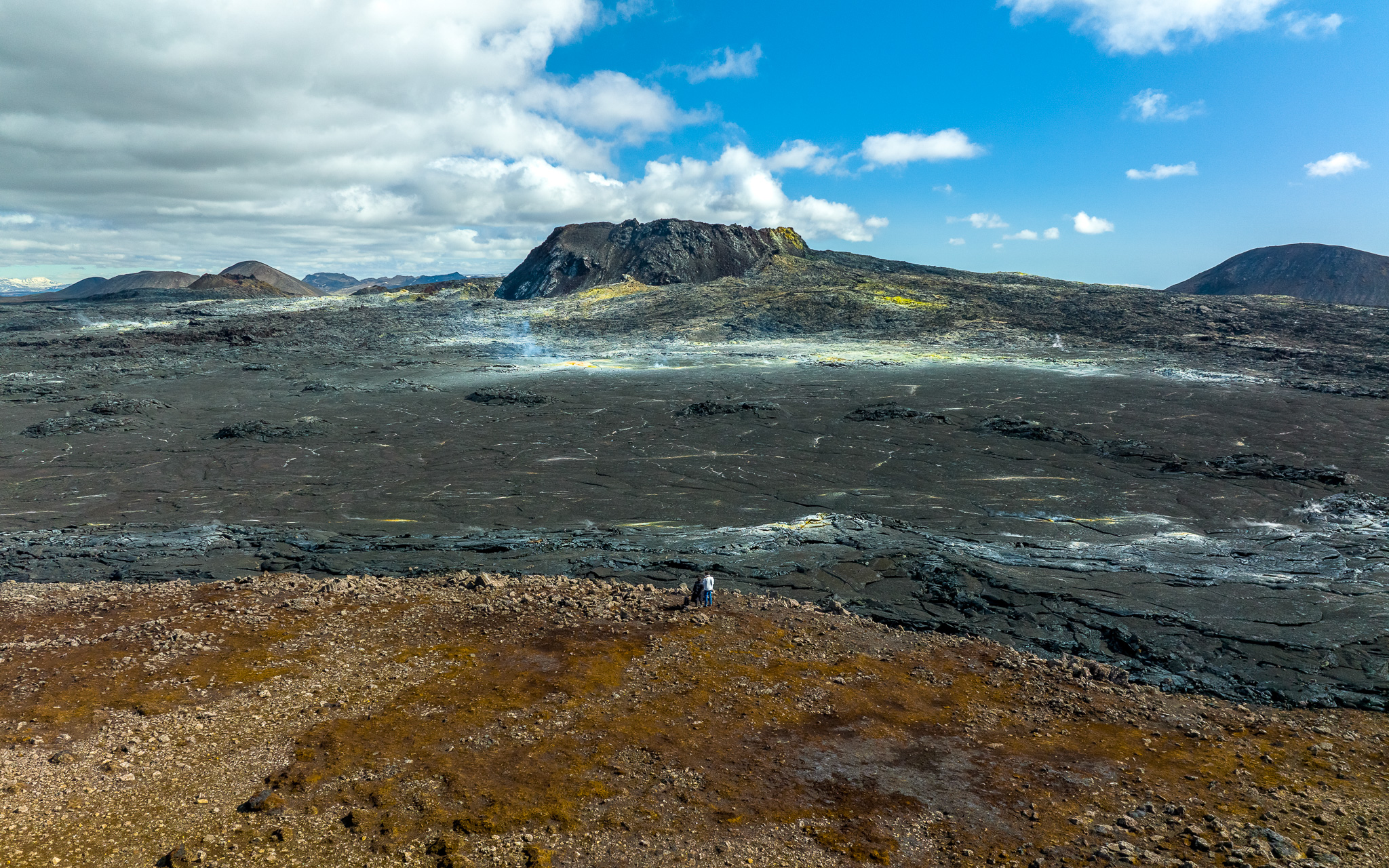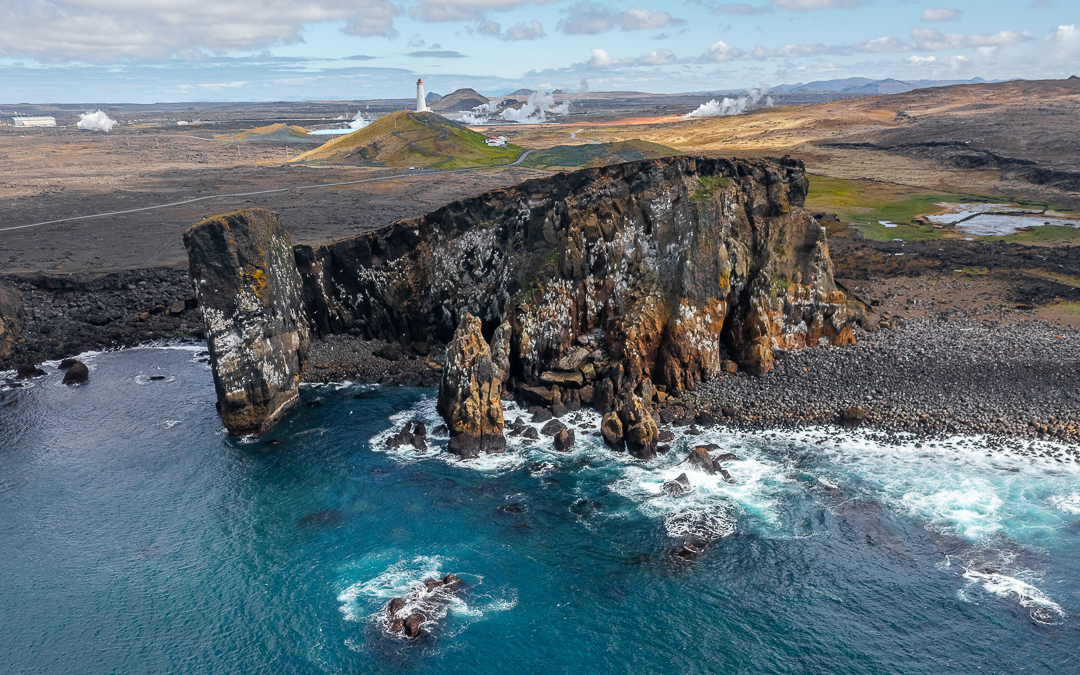Photography Guide: Capturing the Beauty of the Reykjanes Peninsula
Few places on the planet are as captivating to a photographer as Iceland. The raw and rugged terrain begs to be captured and remembered. Thanks to continued tectonic activity, this extraordinary landscape is constantly reinventing itself. Steam rises from the ground in geothermally active pockets and lava flows erupt from fissures that suddenly split the ground apart.
All the while, waves work tirelessly to sculpt the margins where the land meets the sea, scattering boulders on the shore and stranding pinnacles of rock in the shadows. In the sky above, billowing clouds swell and darken to add drama. When they clear, ribbons of green, red and purple dance across the inky blackness to the delight of aurora chasers.
If you’ve never been a photographer, you’ll want that to change as you set eyes on these photogenic landscapes. But whether you’re a serial snapper or a committed professional, if this is your first encounter with the Reykjanes peninsula, you’ll be keen to tour some of its most attractive spots. Here’s where to go. We’ve also included some handy tips in our photography guide.
Where are the most picturesque places on the peninsula?
Even the main road from Keflavik Airport along the northern edge of the peninsula is a sight that will perk up weary travellers. But there are much more scenic parts of Reykjanes that are worth the detour. This peninsula tends to be less busy than, say, Iceland’s south coast, so you’re less likely to be troubled by other people straying into your shot. Seek out the area’s hidden gems and you’ll also have the chance to capture images that are a little different from the rest.
Here are some of our favourite places with a brief description of what makes them particularly special when viewed through a lens.
• Lake Kleifarvatn
The largest lake on the Reykjanes peninsula is a must for any photography excursion. It’s a great place to capture some images of the birds that come here to nest and breed. Waterfowl such as geese, swans and ducks are commonly seen, as well as common snipe, golden plovers and whimbrels, so carry a long lens if you’re keen to get some close-ups. However the lake itself, which is situated within the Krýsuvík geothermal area, also makes for a pretty picture. On a calm day, you might capture delightful reflections of clouds in a blue sky, while the faults and cracks of the surrounding rocks add foreground interest to wide angle shots. From late August to early April, if it’s a clear night you might be lucky enough to see the Northern Lights here. It’s pretty dark here, and with the aurora reflected in the water of the lake you can achieve a striking composition.
• The Krýsuvíkurbjarg cliffs
Seabirds make for an interesting subject and another place you’ll undoubtedly want to investigate is the Krýsuvíkurbjarg cliffs. You’ll find them to the south of the Reykjanes peninsula and depending on the time of year you might encounter as many as 60,000 birds here. It’s at its glorious best in late spring and summer when thousands of migratory birds arrive to build their nests. Numerous guillemots, fulmars, kittiwakes and gulls can be seen here. But there’s one bird that garners more attention than the others put together: the Atlantic puffin. With its black and white plumage, zany beak and bright orange feet, it stands out against the browns, greys and greens of the landscape. But it’s their comical crash landings and beaks stuffed with fish that are the ultimate prize for snappers.
• Gunnuhver Hot Springs
There’s something about steam and swirling mist that adds an ethereal quality to landscape photographs and so setting your sights on Gunnuhver isn’t going to disappoint. Clouds of steam rise from its bubbling hot springs forming a breathtaking contrast between the browns and ochres of the ground and the vivid blue skies above. This is home to Iceland’s largest mud pool, measuring 20 metres in diameter. This and the area’s other mud pools and fumaroles add foreground interest to a colourful landscape. Meanwhile the constant movement of the water will have you snapping repeatedly. Take a stroll along Gunnuhver’s wooden boardwalks as you play around with various compositions. It’s also worth walking up to the top of Kísilhól, a silica hill, as you'll get a good overview of the surrounding landscape as a whole from this elevated vantage point.
• The Blue Lagoon
Iceland’s most famous geothermal lagoon is a dream to capture on camera. The milky blue water, rich with silica and other minerals, forms a dramatic contrast with the charcoal grey of the lava field that surrounds it. It’s worth taking a walk before or after your dip to take some photographs of the complex, though of course you should be mindful of others’ need for privacy. Carry a waterproof case if you intend to snap some selfies inside the lagoon to avoid water damage to your camera. Due to the ongoing volcanic activity impacting parts of the Reykjanes peninsula, the Blue Lagoon has been intermittently closed. It’s therefore advisable to check on its website for the current situation before driving over.
• Fagradalsfjall volcano
The most recent volcanic eruptions on the Reykjanes peninsula have been off-limits to visitors for safety reasons. In contrast, Fagradalsfjall volcano drew photographers from across the globe when it sprang to life unexpectedly in 2021. For months, they came to record rivers of lava and nature’s own fireworks’ display. The resultant eruption left a remarkable landscape scarred with charcoal lava and the telltale yellow stains from sulphur deposits. If the present situation doesn’t preclude access, it’s well worth the hike to take a look at how the lava flows have permanently altered the topography of this part of Reykjanes. The volcanic craters at Eldborg við Geitahlíð, made of lava spatter and scoria, will also appeal to photographers.
• Reykjanes Lighthouse
The area’s lighthouses also make interesting subjects for photography. Reykjanesviti was the country’s first lighthouse. The original structure had to be demolished because of wave and earthquake damage. However, the lighthouse was rebuilt at the start of the 19th century. Today, this historic structure occupies a commanding position at the top of Bæjarfell hill. The white-painted tower topped by a red light is a super focal point in any photograph. Also, strolling up the grassy hill gives you a bit of extra height which makes it an enticing spot for panoramas too. Another historic lighthouse that makes a worthy subject is Garðskagi, which is especially beautiful at sunset.
Because of its unusual setting, there’s something compelling about the Bridge between Continents. Also known as Leif the Lucky’s Bridge, this metal structure spans the gap created as the North American and Eurasian tectonic plates move slowly but steadily apart. You probably won’t stop long here but nevertheless it is a fun place for a selfie or two.
Likewise, Brimketill is worth a quick pitstop. This is a circular lava pool carved out by the waves. It’s not safe to swim here because of the powerful swell, but the white water and swirling waves makes this a fabulously photogenic spot, especially on a sunny day when the water is a vivid blue.
Churches too, prove nature doesn’t have a monopoly when it comes to great images. On the Reykjanes peninsula, the church at Hvalsnes is worth seeking out. The exterior is made of carved local stone, while the interior utilises driftwood scavenged from the nearby shore to gorgeous effect.
What gear do you need if you’re photographing the Reykjanes peninsula?
If these suggested locations have you excited to venture out, you’ll need to get yourself properly kitted out. That doesn’t mean you need to invest in expensive photographic equipment. A decent, modern smartphone can easily be sufficient to do the scenes justice. So in addition to the camera itself, what kind of things do you need for a photography excursion?
In a landscape as breathtaking as this, you could find yourself taking lots of shots. Since photography has gone digital, that’s not really a big issue, so long as you have plenty of memory to store those images until you sift out the keepers. But what you will be grateful of is a spare battery or two. This is particularly important if you’re out and about in cold weather, as nothing drains a battery faster than low temperatures. Pack a spare and tuck it into an inside pocket so that your own body heat keeps it warm until you need to use it.
One of the biggest weather-related challenges to photographers in the Reykjanes peninsula is the wind. This exposed corner of Iceland is vulnerable to strong winds that blow off the Atlantic, gathering speed in the process. To keep images sharp, it’s a good idea to use a tripod, but it’s worth investing in a sturdy one to ensure that it’s not going to topple over the minute there’s a surprise gust. You might also find it helpful to carry a small beanbag which can be used to anchor the tripod in place. Alternatively, a short tripod with bendable legs that can be wrapped around a fence or attached to a post could also work.
In the cold and wind, extremities such as fingers and toes can quickly become numb. Before setting out, make sure you are dressed appropriately to stand around taking photographs. Layer up and be sure to consider your feet with some cosy socks and thick soled hiking boots. A hat’s also essential, with the added bonus that it will keep your ears warm and keep long hair out of the way of the lens. But there’s another thing: to be able to work the controls on your camera, you may need to remove your gloves. Fingerless mittens can be one solution, as they keep the majority of your hand warm while you play around with the controls. Another option is specialist gloves which are designed to work with screens without you having to take them off.
Depending on how long you plan to stay outside, you may need to consider bringing some provisions to keep hunger pangs at bay, as the Reykjanes peninsula isn’t densely populated. If you’re enchanted by the comic antics of a colony of cute puffins, entranced by new lava flows or mesmerised by the smoke emanating from a geothermally active valley, the time can pass surprisingly fast. Throw some energy bars into your bag so that you don’t need to drag yourself away from a remote spot in order to refuel. Also, a flask of hot coffee can be a godsend, though remember the more liquid you consume the more likely it is that you’ll need to find a bathroom instead.


